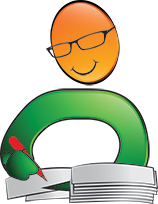Author Services

Proofreading, Editing, Critique
Getting help with your book from a professional editor is always recommended but often just too expensive. We have partnered with a professional editor with 30 years of experience to provide quality writing services at affordable prices.
Visit our Writing Services Page
Hundreds of Helpful Articles
We have created hundreds of articles on topics all authors face in today’s literary landscape. Get help and advice on Writing, Marketing, Publishing, Social Networking, and more. Each article has a Comments section so you can read advice from other authors and leave your own.
Alternatives to Journaling
I could never stick with journaling. From my days in middle school where it was required in English class to a counselor telling me it was necessary after my Dad passed away, I couldn’t seem to make myself do it. It felt like a chore,...
Five Free Resources for Writers
We all feel the pinch of inflation and soaring gas prices these days. It seems like costs are rising while paychecks stagnate, leading us to be more creative about making better use of what we have and buying less. Today, I’d like to tell you...
Insight about Writing a Short Story
Short stories are the shorter version of novels and fall between thousand to five thousand words. These word restraints challenge the writer's creativity. Crafting a story with a theme, well-developed characters, a plot, and an ending is complex. The limited number of words also limits...
How to Write Fight Scenes
Fight scenes can be daunting to write. In simple terms, the conflict in your story manifests as physical violence in an all-out fight. Here are some essential tips for writing good fight scenes that hold your reader's attention: Plan your fight scenes in advance: Fights don't happen randomly....
Plot, the Rise and the Fall
The plot is not just a device we use to move a story forward. A plot must have a purpose and a meaning to both the character and the reader. The plot is driven by the character and the character is driven by the plot. One...
How To Write A Negative Review
As a reviewer, coming across a book that one did not like is frequent. The negative review written without consideration might deter a writer from the art. Therefore, one needs to be careful while crafting such reviews. Writing a positive review is much easier, in my...
How Colors are Incorporated in Writing to Depict Different Moods
To write effectively is to make your readers be present in your story and feel the mood of the story’s setting. Color symbolism is one such element that has been used in literature over many years, either to describe the spirit of the environment or...
Creative Journal Keeping
Keeping a creative writing journal is something that most people in the writing world keep. It is not a journal of your everyday thoughts, that is something of a different nature. A creative journal is where you spend your time creating stories, ideas and building...
How to Start Writing
Writing may seem and sound like an easy thing to do, especially when you have never tried it. Many people have had plans or ambitions to write, but they have not written not a single word to date. You must be wondering how so? I...
9 Reasons Reading Makes You A Better Fiction Writer
Most writers have received this advice: To be a better writer, you need to read a lot. But you think it is better to spend more time writing. Writing more seems so more efficient, right? Let's look at this suggestion and discover if and how reading...